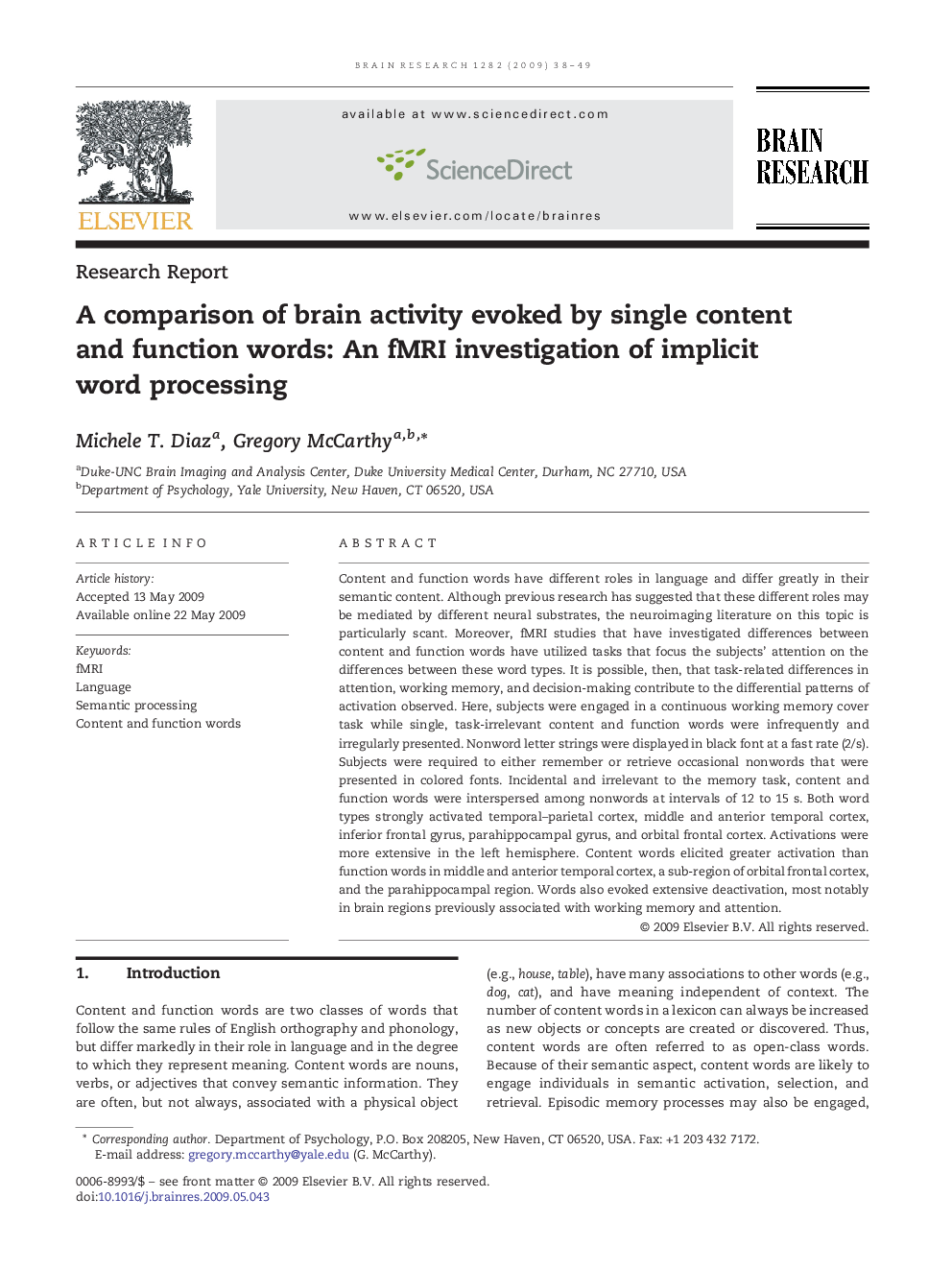| Article ID | Journal | Published Year | Pages | File Type |
|---|---|---|---|---|
| 4328083 | Brain Research | 2009 | 12 Pages |
Content and function words have different roles in language and differ greatly in their semantic content. Although previous research has suggested that these different roles may be mediated by different neural substrates, the neuroimaging literature on this topic is particularly scant. Moreover, fMRI studies that have investigated differences between content and function words have utilized tasks that focus the subjects' attention on the differences between these word types. It is possible, then, that task-related differences in attention, working memory, and decision-making contribute to the differential patterns of activation observed. Here, subjects were engaged in a continuous working memory cover task while single, task-irrelevant content and function words were infrequently and irregularly presented. Nonword letter strings were displayed in black font at a fast rate (2/s). Subjects were required to either remember or retrieve occasional nonwords that were presented in colored fonts. Incidental and irrelevant to the memory task, content and function words were interspersed among nonwords at intervals of 12 to 15 s. Both word types strongly activated temporal–parietal cortex, middle and anterior temporal cortex, inferior frontal gyrus, parahippocampal gyrus, and orbital frontal cortex. Activations were more extensive in the left hemisphere. Content words elicited greater activation than function words in middle and anterior temporal cortex, a sub-region of orbital frontal cortex, and the parahippocampal region. Words also evoked extensive deactivation, most notably in brain regions previously associated with working memory and attention.
